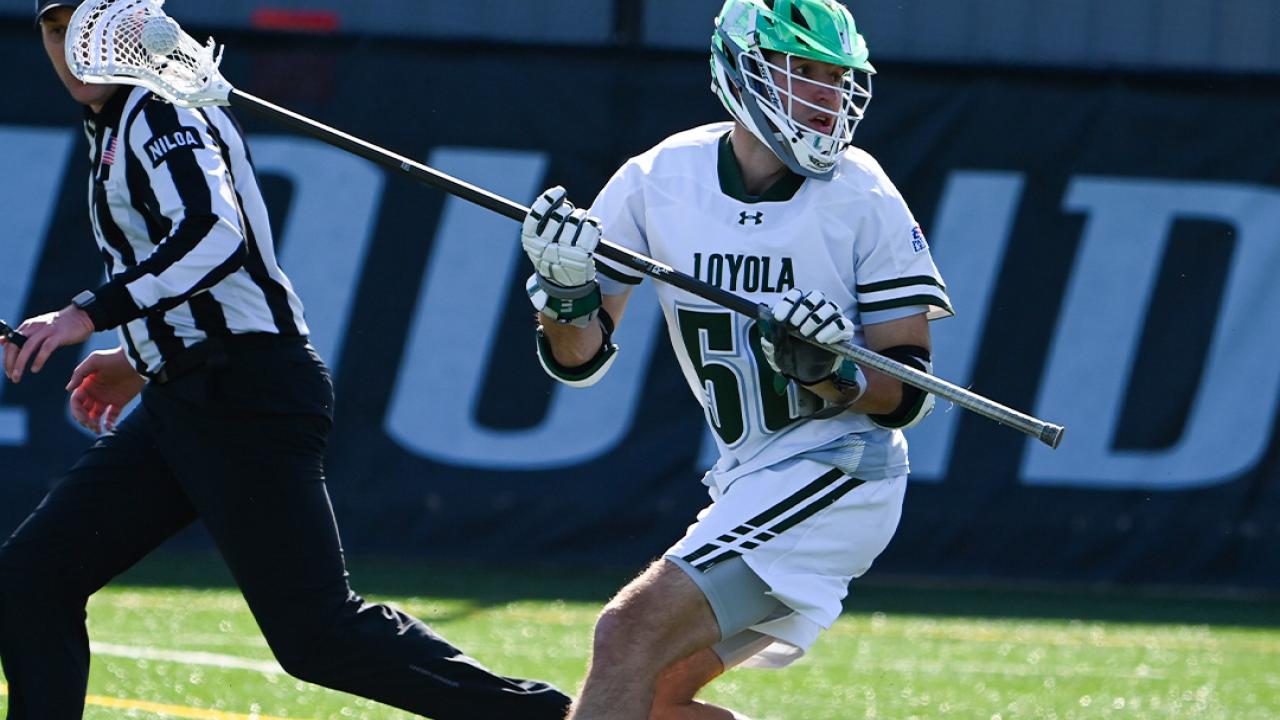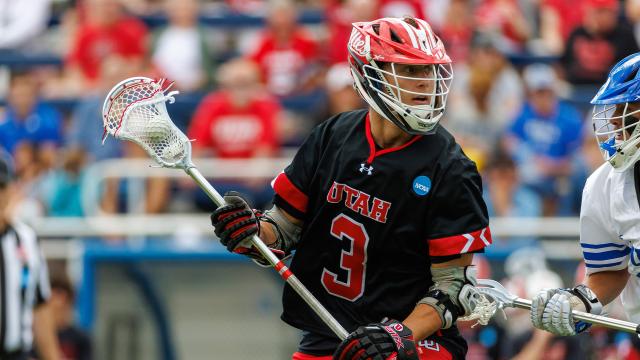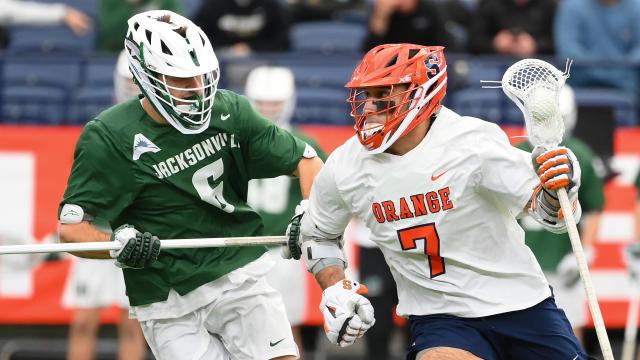

© 2026 USA Lacrosse. All Rights Reserved.

BALTIMORE — Perhaps the greatest test Loyola faced Saturday was one that had nothing to do with which opponent showed up at the Ridley Athletic Complex. Instead, the Greyhounds had the task of dealing with sudden prosperity.
The Loyola defense managed it just fine, smothering short-handed Johns Hopkins for much of a 13-8 rout that never felt especially close after the first 20 minutes.
“I thought it was a near-perfect first half defensively,” Loyola coach Charley Toomey said. “I thought the guys were just dialed in on their matchups and just played good, solid defense. Now our challenge for our team is to have defense that travels.”
The Greyhounds (2-0) held Maryland to seven goals in their opener a week ago. Saturday brought more of the same; Loyola limited the Blue Jays (2-2) to five goals until the final two minutes.
Chalk some of it up to the absence of Hopkins attackmen Jacob Angelus and Russell Melendez for reasons coach Peter Milliman declined to disclose. Angelus had two goals and eight assists in the Blue Jays’ first three games, while Melendez had five goals.
“It’s an adjustment anytime you’re taking significant pieces out of the puzzle, but it’s not an excuse by any means,” said Milliman, whose team trailed 6-2 at halftime. “There’s opportunities for everybody. We work with the same group all week long. I don’t think any of it has to do with the fact we didn’t have two guys we had the other day. It was not the best effort, and it was not a tough showing and we have to get better there.”
Regardless of who was available and who wasn’t, two things were obvious. Loyola handled Hopkins’ lineup shuffle — which saw starting midfielders Dylan Bauer and Brendan Grimes move to attack and Cameron Chauvette and Matt Collison get starting midfield nods — with ease.
In turn, it was an arduous task for the Blue Jays to generate remotely decent scoring opportunities. And that came after the Blue Jays managed just one goal in the second half of an 11-7 loss to North Carolina on Tuesday.
“We’ve been trying to make home run plays that just aren’t there,” attackman Garrett Degnon said. “We found success in the beginning of the year in just trying to move it forward, not throwing skips, not jamming it inside too much. Just re-emphasizing going back to simple lacrosse, just creating an advantage and making simple plays after that.”
While Loyola had its share of unknowns coming off an 8-8 season, there were credible questions coming out of last season how well its defense would fare. Yes, its two most established players — short stick Payton Rezanka and defenseman Cam Wyers — were part of that unit. But it was still a group that yielded at least 14 goals on five occasions and had a new starting goalie to break in.
The latter hasn’t been an issue. Junior Luke Staudt followed up a 19-save display against Maryland with 10 stops against Hopkins.
The guys in front of Staudt have been plenty effective as well. Matt Hughes stymied Maryland’s Owen Murphy in the opener and spent a chunk of Saturday helping keep Bauer without a point. And in aggregate, Loyola is playing with a cohesion it didn’t enjoy for much of last season (or, frankly, a decent swath of 2021, either).
“I think there’s just been a lot more urgency, and that’s something we’ve emphasized all year, and it’s just something we’re trying to bring every day into practice — urgency, a lot of communication and a lot of energy,” Wyers said.
Wyers said the Greyhounds have had plenty of internal talks about playing as a unit and having off-ball guys connect on the back side. And it has fostered trust in the team’s capable short sticks to do their jobs and the guys defending below the goal line to do the same.
Most striking is the degree of disruptiveness Loyola has created in its first two games. The Greyhounds forced 11 of Maryland’s 17 turnovers last week, then nudged Hopkins into 13 of its 17 giveaways Saturday.
That bodes well whether Loyola is facing Big Ten teams (like it will for the third consecutive game when it visits Rutgers next Saturday) or when it delves into its Patriot League schedule next month.
“Our off-ball defense is good,” Toomey said. “We get sticks in lanes, and a lot of those are knocked-down passes. Some of them are just little simple hedges where a guy rolls and now it turns into a double team. There’s a lot of chemistry right now with our defensive unit. They’re reading the body language of their teammates and making good decisions. Obviously, when the ball hits the ground, there’s an energy to go get it and take care of it.”
Patrick Stevens has covered college sports for 25 years. His work also appears in The Washington Post, Blue Ribbon College Basketball Yearbook and other outlets. He's provided coverage of Division I men's lacrosse to USA Lacrosse Magazine since 2010.





